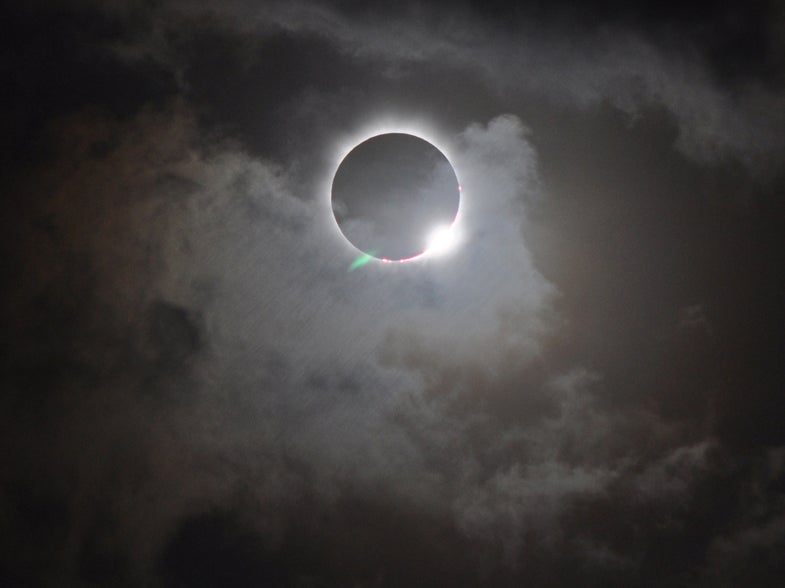One weird thing about eclipses you’ve probably never noticed
Some drawings to explain the August eclipse's trajectory.

This summer, for the first time since 1918, a total solar eclipse will cut a path across the mainland United States. On August 21, everyone in North America will be able to watch the moon pass in front of the sun, blotting out some or all of its light (depending on where you live). People near Lincoln City, Oregon will see the total eclipse around 9:05am PDT. Then the path of totality slants eastward, finishing up in South Carolina at 2:43pm EDT.

But hold on—if the moon rises in the east and sets in the west (or pretty close to it, anyway), why does the shadow of an eclipse move from west to east? The answer, says Angela Speck, an astronomer at the University of Missouri, is a matter of perspective.
Watching the sky from the ground, we can see the moon (and the sun and stars) cross from east to west, as if they were moving in a clockwise direction around us.
“It’s almost like we are geocentric,” says Speck, referring to the outdated idea that the sun and moon revolve around our own pale blue dot. “We think of the Earth as being stationary, and everything’s moving around us, but it’s not like that.”
So let’s take a step back and picture the motions of Earth and the moon from a different point-of-view than the one we’re used to.
The moon “rises” in the east because Earth spins counterclockwise. From the top down, that looks like this:

In the diagram above, “A” will see the moon on its horizon sooner than “B” will, just because of the way the Earth spins. Looking at that again from a side view, you can see that A is east of B:

So that’s why the moon, sun, and stars rise in the east. But let’s not forget that the moon is moving, too. It circles Earth in a counterclockwise direction, like this:

Look at A and B from the side again, and you’ll see that the Moon actually passes in front of B, in the west, first. That’s why the eclipse’s shadow will travel from west to east.
Earth spins at about 1,040 miles per hour, while the moon moves around the Earth at about 2,100 mph. That means the shadow of the eclipse will travel east at a speed of 2,100-1,040= 1,060 miles per hour.

If the moon is moving twice as fast as the Earth spins, why doesn’t it ever lap us and rise in the west instead? That’s because the moon has to travel in a circle that’s much larger than the Earth’s circumference—it takes 27 days for the moon to complete its orbit around the globe. Partly it takes so long because the Earth is spinning, too. This animation (from 0:04 to 0:14) helps to explain things:

For more perspectives on the upcoming eclipse, stay tuned for more coverage from PopSci.com, coming soon.